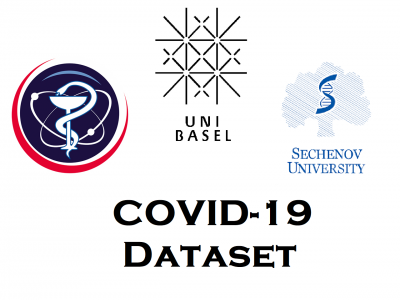COVID-19
The dataset contains the data on ICU-transferred (N=100) and Stable (N=131) patients with COVID-19 (N=156) and Non-COVID-19 viral pneumonia (N=75). Among COVID-19 patients of this study, 82 patients developed Refractory Respiratory Failure (RRF) or Severe Acute Respiratory Distress Syndrome (SARDS) and were transferred to Intensive Care Unit (ICU), 74 patients had a Stable course of disease and were not transferred to ICU. Collected data are presented as a table with columns:
- Gender;
- Age (years);
- SARS-CoV-2 RT-PCR testing results;
- Categories:
 664 Views
664 Views
- Categories:
 892 Views
892 ViewsThis dataset is in support of my following Research papers
Preprint (Make sure you have read Caution) :
- Novel ß Transtibial Prosthetic 9-DoF Artificial Leg Adaptive Controller - Part I*
- Categories:
 2192 Views
2192 ViewsThis is two-part open-access webpage of 'Data:B-Bio Models'.This webpage contains datasets of 'Computational Biology'and Novel ß-Bio models, project folders, with clinical and pharmacy investigation in simulation, proposed by me which are Self-Claimed advancements, in support of my Research claims, discoveries, presentations and books. All content can be freely downloaded after sign-up.
- Categories:
 3990 Views
3990 ViewsThis India-specific COVID-19 tweets dataset has been curated using the large-scale Coronavirus (COVID-19) Tweets Dataset. This dataset contains tweets originating from India during the first week of each of the four phases of nationwide lockdowns initiated by the Government of India. For more information on filtering keywords, please visit the primary dataset page.
Announcements:
- Categories:
 5125 Views
5125 ViewsThis dataset gives a cursory glimpse at the overall sentiment trend of the public discourse regarding the COVID-19 pandemic on Twitter. The live scatter plot of this dataset is available as The Overall Trend block at https://live.rlamsal.com.np. The trend graph reveals multiple peaks and drops that need further analysis. The n-grams during those peaks and drops can prove beneficial for better understanding the discourse.
- Categories:
 6284 Views
6284 Views
Recently, the coronavirus pandemic has made the use of facial masks and respirators common, the former to reduce the likelihood of spreading saliva droplets and the latter as Personal Protective Equipment (PPE). As a result, this caused problems for the existing face detection algorithms. For this reason, and for the implementation of other more sophisticated systems, able to recognize the type of facial mask or respirator and to react given this information, we created the Facial Masks and Respirators Database (FMR-DB).
- Categories:
 1273 Views
1273 Views






